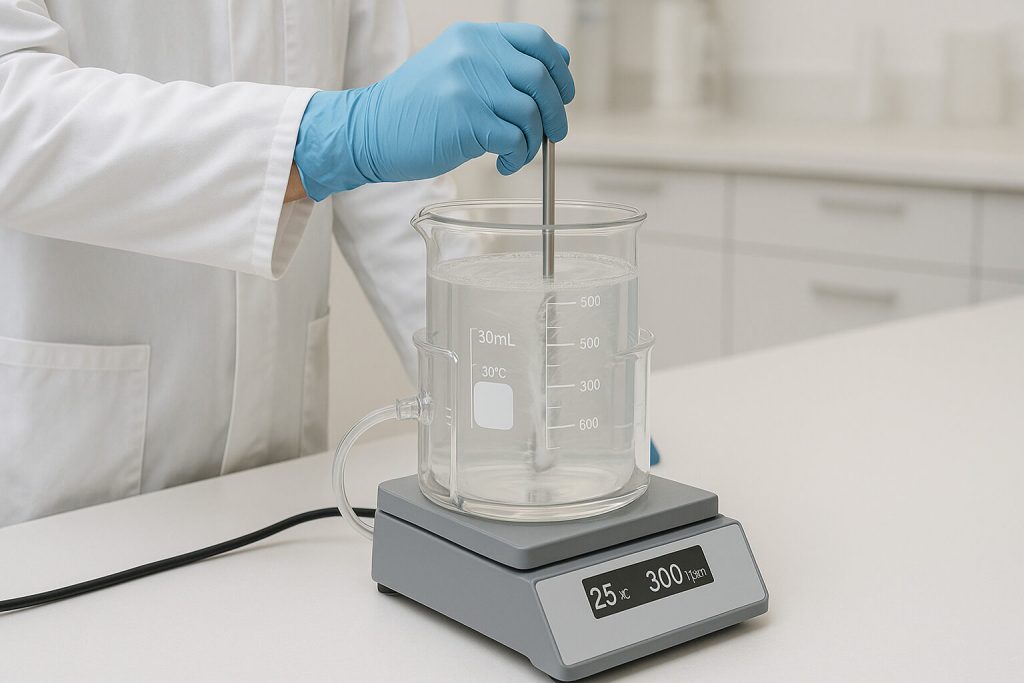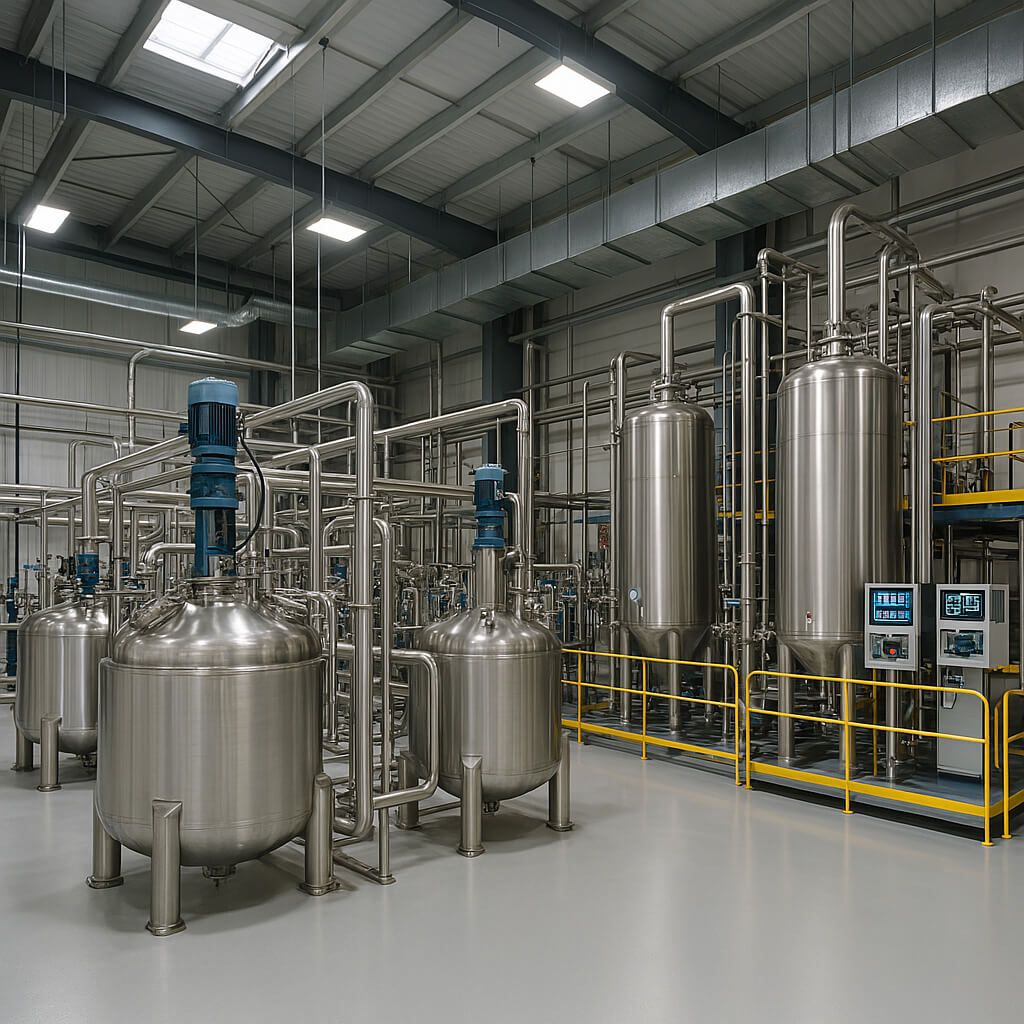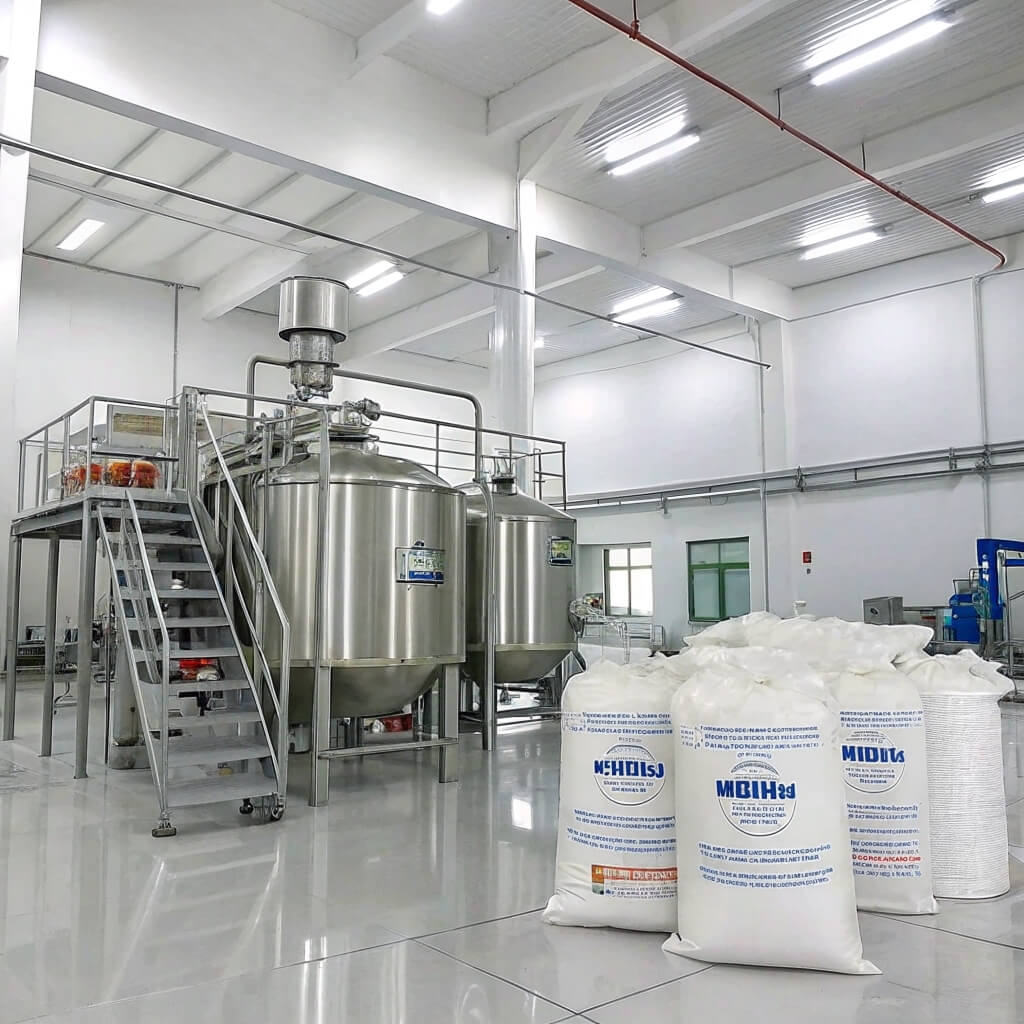Preparing the perfect HPMC coating solution is a critical process that many pharmaceutical and food manufacturers struggle with daily. When improperly prepared, these solutions can lead to inconsistent coating, product rejection, and significant production delays. Fortunately, with the right approach and understanding of key parameters, you can consistently create high-quality HPMC coating solutions that deliver superior performance. This comprehensive guide walks you through proven methods, troubleshooting techniques, and optimization strategies based on decades of industry experience and scientific research.

1. What Is HPMC And Why Is It Used For Coating?
Hydroxypropyl methylcellulose (HPMC) is a semi-synthetic, inert polymer derived from cellulose. This versatile compound features both methoxy and hydroxypropyl functional groups attached to the cellulose backbone, giving it unique properties that make it invaluable in coating applications. HPMC forms clear, tough, flexible films that provide excellent barriers against moisture, oxygen, and other environmental factors.
But here’s the thing: HPMC’s popularity in coating applications stems from its remarkable combination of properties that few other coating materials can match. It’s non-toxic, biodegradable, and compatible with most active pharmaceutical ingredients and food components.
In the pharmaceutical industry, HPMC serves as the backbone for tablet coating, providing protection, masking taste, controlling release profiles, and improving appearance. Its film-forming capabilities create smooth, uniform coatings that resist chipping and cracking while maintaining stability across various storage conditions.
The food industry similarly values HPMC for its ability to create edible films that extend shelf life, improve appearance, and prevent moisture migration. Its versatility extends to paper products, where it provides grease resistance and strength.
| Propriété | Benefit in Coating Applications |
|---|---|
| Film-forming ability | Creates uniform, continuous coatings |
| Solubilité | Dissolves in various solvents including water |
| Viscosity range | Adaptable to different application methods |
| Gélification thermique | Provides controlled release properties |
| Chemical stability | Long shelf life and compatibility |
When compared to other coating materials like ethylcellulose (EC), polyvinyl alcohol (PVA), or shellac, HPMC offers superior flexibility in formulation, better stability, and easier processing. Its hydrophilic nature makes it particularly suitable for immediate-release formulations, while its ability to form matrices allows for controlled-release applications when properly formulated.
2. What Equipment And Materials Do You Need For HPMC Coating Solution?
Preparing a high-quality HPMC coating solution requires specific equipment and materials to ensure consistency and performance. The selection of appropriate tools and ingredients forms the foundation for successful coating operations.
Vous pourriez être surpris d'apprendre that the grade of HPMC you select dramatically impacts your coating solution’s properties. HPMC comes in various viscosity grades (typically ranging from 3 to 100,000 mPa·s) and substitution types (identified by numbers like E5, K4M, etc.), each suited for specific applications.
Essential laboratory equipment for HPMC solution preparation includes:
- High-shear mixer or homogenizer capable of 500-3000 RPM
- Temperature-controlled water bath or jacketed vessel
- Precision balance with 0.01g accuracy
- pH meter for monitoring solution properties
- Viscometer for quality control checks
- Filtration system (typically 100-200 micron)
The primary materials required include the HPMC polymer itself, appropriate solvents (usually purified water), and various functional additives. When selecting HPMC grades, consider the substitution type, viscosity, and particle size, as these parameters directly influence dissolution behavior and final solution properties.
| Equipment/Material | Specification | But |
|---|---|---|
| High-shear mixer | 500-3000 RPM capability | Ensures proper dispersion without agglomeration |
| HPMC powder | Pharmaceutical/food grade (USP/EP/FCC) | Primary film-forming polymer |
| Purified water | USP/EP grade | Primary solvent |
| Plastifiants | PEG, glycerin, propylene glycol | Improves film flexibility |
| Colorants | Iron oxide pigments, lake colors | Provides visual identification |
| Safety equipment | Dust masks, gloves, eye protection | Prevents inhalation and contact issues |
Safety precautions are paramount when handling HPMC powder, as fine particles can cause respiratory irritation and pose explosion hazards when airborne in high concentrations. Always use appropriate personal protective equipment, including dust masks, gloves, and eye protection. Proper ventilation in the preparation area helps minimize these risks.
3. What Are The Step-By-Step Methods To Prepare HPMC Coating Solution?
Preparing HPMC coating solution requires careful attention to procedure to avoid common issues like lumping or incomplete hydration. Two primary methods exist: the cold dispersion method and the hot dispersion method, each with distinct advantages for specific applications.
Here’s the secret: The key to perfect HPMC solutions lies in the initial dispersion phase. Proper dispersion prevents the formation of “fish eyes” (partially hydrated lumps) that can ruin coating uniformity and clog spray nozzles.
The cold dispersion method follows these steps:
- Heat approximately one-third of the required water to 80-90°C
- Disperse the HPMC powder into the remaining cold water (below 10°C) with vigorous agitation
- Add the hot water to the cold dispersion while maintaining agitation
- Continue mixing until a clear solution forms (typically 30-60 minutes)
- Add any required additives (plasticizers, colorants, etc.)
- Adjust to final volume and verify solution properties
The hot dispersion method takes a different approach:
- Heat all water to 80-90°C
- Add HPMC powder slowly to the hot water with vigorous agitation
- Continue mixing until particles are well dispersed
- Allow the solution to cool below 40°C with continued agitation
- Add additives after cooling
- Adjust to final volume and verify solution properties
| Méthode | Avantages | Inconvénients | Best For |
|---|---|---|---|
| Cold Dispersion | Better for high viscosity grades, Fewer lumps | Requires temperature control, Longer process | High-viscosity HPMC grades, Critical applications |
| Hot Dispersion | Simpler equipment needs, Faster process | More prone to lumping, May require filtration | Low-viscosity HPMC grades, Large-scale production |
Concentration calculations are critical for consistent performance. The typical concentration range for coating solutions is 5-15% w/w, depending on the application and HPMC grade. Use this formula to calculate the amount of HPMC needed:
HPMC weight (g) = (Final solution weight × Desired concentration %) ÷ 100
Quality control checks during preparation should include:
- Viscosity measurement (using appropriate spindle and RPM)
- pH determination (typically 5.5-8.0)
- Visual inspection for clarity and absence of particles
- Film formation test on glass plates
Allow the prepared solution to stand for 12-24 hours before use to ensure complete hydration and deaeration, which significantly improves coating quality.
4. How Do You Troubleshoot Common HPMC Coating Solution Problems?
Even experienced formulators encounter issues when preparing HPMC coating solutions. Recognizing common problems and knowing how to address them quickly can save time, materials, and prevent production delays.
Soyons clairs à ce sujet : Most HPMC coating failures can be traced back to improper solution preparation rather than issues with the coating equipment or process parameters.
Lumping and agglomeration represent the most frequent challenges. These “fish eyes” occur when HPMC particles hydrate on their surface, forming a gel layer that prevents water from reaching the particle core. To address this issue:
- Ensure proper dispersion technique (cold water dispersion before adding hot water)
- Increase agitation speed during the initial dispersion phase
- Consider using HPMC grades with surface treatment for easier dispersion
- Implement a high-shear mixing step if persistent lumps occur
- As a last resort, filter the solution through an appropriate mesh
| Problème | Possible Causes | Solutions |
|---|---|---|
| Lumping/Agglomeration | Improper dispersion technique, Insufficient agitation | Use cold dispersion method, Increase mixing speed |
| Faible viscosité | Incorrect HPMC grade, Degradation due to high temperature | Verify HPMC grade, Control temperature below 90°C |
| Haute viscosité | Excessive concentration, Incomplete hydration | Dilute solution, Allow longer hydration time |
| Poor Clarity | Contaminants, Incompatible additives | Filter solution, Check additive compatibility |
| Short Shelf Life | Microbial contamination, Chemical degradation | Add preservatives, Store properly |
Viscosity problems typically stem from incorrect HPMC grade selection, improper concentration, or degradation during preparation. If viscosity is too low, verify the HPMC grade and concentration calculations. If too high, ensure you’re not exceeding recommended concentration limits for the application method.
Clarity and transparency issues often indicate incompatible additives or improper dissolution. Ensure complete hydration by allowing sufficient standing time and verify the compatibility of all solution components. Some additives may require specific incorporation techniques or pH adjustment.
Stability and shelf-life concerns typically relate to microbial growth or chemical degradation. Implement appropriate preservation methods (such as adding 0.1-0.2% sodium benzoate or potassium sorbate) and store solutions in clean, sealed containers away from direct light and heat.
Application inconsistencies usually stem from improper solution properties or equipment issues. Ensure the solution viscosity matches your application method specifications and that the solution is completely free of air bubbles before coating operations begin.
5. What Are The Critical Parameters That Affect HPMC Coating Quality?
The quality of your HPMC coating depends on multiple interrelated parameters that must be carefully controlled throughout the preparation and application process. Understanding these critical factors allows for consistent, high-quality coatings.
You need to understand that viscosity stands as the single most influential parameter in HPMC coating performance. It affects spray pattern, droplet size, coating thickness, and ultimately, the functional properties of the final coating.
Viscosity and concentration are directly related, with higher concentrations producing more viscous solutions. The optimal concentration depends on your application method:
- Pan coating: 6-12% w/w HPMC
- Fluid bed coating: 4-8% w/w HPMC
- Dip coating: 2-5% w/w HPMC
Temperature significantly impacts HPMC solutions in two critical ways. During preparation, excessive heat (>90°C) can degrade the polymer and reduce viscosity. During application, HPMC exhibits thermal gelation (becoming more viscous at higher temperatures), which can affect spray patterns and film formation.
| Paramètre | Plage acceptable | Effect on Coating |
|---|---|---|
| Viscosité | 100-500 cP (spray coating) | Affects atomization, film thickness, drying rate |
| Température | Preparation: <90°C Application: 20-30°C | Influences dissolution, stability, spray pattern |
| Vitesse de mélange | 500-3000 RPM (preparation) | Determines dispersion quality, air incorporation |
| pH | 5.5-8.0 | Affects stability, compatibility with additives |
| Storage Time | 24-72 hours (before use) | Ensures complete hydration, deaeration |
Mixing speed and duration impact both the initial dispersion quality and the incorporation of air into the solution. Excessive agitation can incorporate air bubbles that compromise coating appearance, while insufficient mixing leads to incomplete hydration and lumps.
Storage conditions significantly affect solution stability. HPMC solutions should be stored in clean, sealed containers at controlled room temperature (20-25°C). Exposure to extreme temperatures, microbial contamination, or excessive light can degrade the solution quality over time.
Compatibility with active ingredients must be verified, as some compounds may interact with HPMC, affecting solution properties or stability. Perform compatibility studies by preparing small batches with the active ingredient and observing for changes in viscosity, clarity, or pH over time.
6. How Can You Optimize HPMC Coating Solution For Different Applications?
Different applications require tailored HPMC coating solutions to achieve optimal performance. By adjusting key parameters, you can customize your coating solution for specific products and desired outcomes.
I want to emphasize this point: The most successful coating operations match the HPMC solution properties precisely to both the substrate being coated and the application equipment being used.
For pharmaceutical tablet coating, optimization focuses on achieving uniform coverage, elegant appearance, and appropriate functional properties. Consider these adjustments:
- For immediate-release coatings: Use lower viscosity HPMC grades (3-15 mPa·s) at 6-8% concentration
- For modified-release coatings: Select higher viscosity grades (>4000 mPa·s) or combine with other polymers
- For enteric coatings: Blend HPMC with pH-sensitive polymers like HPMCAS or HPMCP
- For moisture protection: Add hydrophobic components like stearic acid or wax
Food product coating requires different considerations, particularly regarding sensory properties and regulatory compliance:
| Application | Qualité HPMC | Concentration | Key Additives |
|---|---|---|---|
| Pharmaceutical Immediate Release | Low viscosity (E3, E5, E15) | 6-8% | Plasticizers, pigments |
| Pharmaceutical Modified Release | High viscosity (K4M, K15M) | 8-12% | Release modifiers, plasticizers |
| Food Moisture Barrier | Medium viscosity (E50, K100) | 4-6% | Lipids, emulsifiers |
| Food Oxygen Barrier | High viscosity (K4M, K15M) | 6-10% | Antioxidants, plasticizers |
| Paper Products | Low-medium viscosity (E15, E50) | 3-5% | Sizing agents, strengtheners |
Controlled release formulations require careful selection of HPMC viscosity grade and concentration. Higher viscosity grades create denser matrices that slow drug release, while the addition of hydrophobic components can further modify release profiles. Always verify release characteristics through dissolution testing.
Scale-up considerations from laboratory to production scale include:
- Equipment differences (laboratory mixers vs. production equipment)
- Heat transfer variations affecting dissolution kinetics
- Mixing efficiency changes requiring adjusted protocols
- Longer standing times for complete hydration of larger batches
- Potential need for antifoaming agents in production-scale batches
For special requirements such as enteric properties or targeted release, consider blending HPMC with other polymers like phthalates (HPMCP), succinates (HPMCAS), or adding pH-dependent solubility modifiers. These combinations can achieve specialized coating functions while maintaining the excellent film-forming properties of HPMC.
Conclusion
Mastering HPMC coating solution preparation delivers tangible benefits to your manufacturing process, with studies showing up to 40% reduction in coating defects when following optimized preparation protocols. The comprehensive approach outlined in this guide—from understanding HPMC properties to troubleshooting common issues—provides you with the knowledge needed to consistently produce high-quality coating solutions. For specialized formulation assistance or to discuss custom HPMC grades for your specific application, contact our technical team today. We’re committed to helping you achieve coating excellence through partnership and technical expertise.
Rubrique FAQ
Q1: Can HPMC coating solution be prepared in advance and stored?
Yes, HPMC coating solutions can be prepared in advance and typically remain stable for 7-14 days when stored properly. Store solutions in clean, sealed containers at controlled room temperature (20-25°C) away from direct light. For extended storage (beyond 2 weeks), adding preservatives like 0.1% sodium benzoate is recommended to prevent microbial growth. Always check for changes in viscosity, clarity, and pH before using stored solutions, and filter if necessary to remove any particles that may have formed during storage.
Q2: What’s the difference between HPMC and other cellulose derivatives for coating?
HPMC differs from other cellulose derivatives primarily in its substitution pattern and resulting properties. Compared to methylcellulose (MC), HPMC offers better solubility in cold water and organic solvents. Ethylcellulose (EC) creates water-insoluble films suitable for sustained release, while HPMC forms water-soluble films ideal for immediate release. Hydroxypropylcellulose (HPC) has higher organic solvent solubility than HPMC but is more expensive. Carboxymethylcellulose (CMC) is more sensitive to pH and electrolytes than HPMC. HPMC’s balanced properties make it the most versatile choice for most coating applications.
Q3: How do you determine the right HPMC concentration for your specific application?
Determining the optimal HPMC concentration requires considering your application method, desired film thickness, and processing conditions. Start with these guidelines: 6-8% for spray coating, 2-5% for dip coating, and 8-12% for brush application. Conduct small-scale trials at three concentrations within these ranges, evaluating coating uniformity, appearance, and functional properties. For pharmaceutical applications, perform dissolution testing to ensure appropriate drug release. For food applications, assess moisture barrier properties and sensory impact. The ideal concentration balances good film formation with practical processing parameters like viscosity and drying time.
Q4: Can you add colorants and other additives to HPMC coating solution?
Yes, HPMC coating solutions readily accommodate various additives. Colorants (iron oxide pigments, lake colors, natural colorants), plasticizers (PEG 400/6000, glycerin, propylene glycol), opacifiers (titanium dioxide, talc), and functional additives (antioxidants, flavors) can all be incorporated. Add water-soluble components directly to the prepared HPMC solution with gentle mixing. For insoluble additives like pigments, pre-disperse in a small amount of water or compatible solvent before adding to the main solution. Always verify compatibility through stability testing, as some additives may affect solution viscosity or cause precipitation over time.
Q5: What are the most common mistakes when preparing HPMC coating solutions?
The most common mistakes include improper dispersion technique (adding HPMC directly to warm water, causing immediate lumping), insufficient agitation during the critical dispersion phase, incorrect temperature management (overheating causing polymer degradation), inadequate hydration time (using solutions before complete hydration), and improper concentration calculations. Other frequent errors include using contaminated equipment, failing to filter solutions before use, and neglecting quality control checks like viscosity measurement. To avoid these issues, follow established protocols, use appropriate equipment, allow sufficient hydration time (minimum 12-24 hours), and implement thorough quality control procedures before coating operations.




